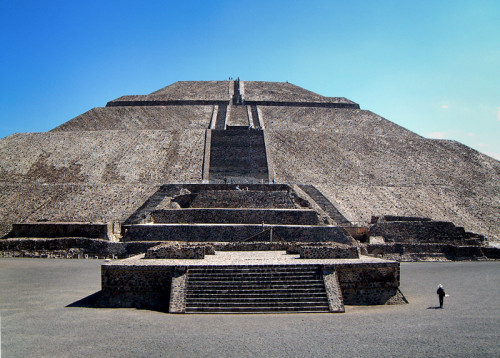
W2-0006: Pyramid of the SunLittle is known about the emergence of Teotihuacan and the people responsible for building this vast and unique city. Construction began with a huge ceremonial core and the building of three enormous pyramids in the 1st century AD. There was no progression, not even in the surrounding areas, and so it appears that the Teotihuacano arrived with the knowledge to build on a scale never seen before in the Americas. Their first construction, the Pyramid of the Sun, would be so large that only the Great Pyramid of Giza could eclipse it. The size and grandeur of Teotihuacan’s massive monumental structures has mystified most who have walked along its mighty Avenue of the Dead. It has ignited many imaginations and sparked many theories on who could have built such an enigmatic city. This great city may have even perplexed the mighty Aztecs when they rediscovered it in the 13th century. They named it Teotihuacan, which approximately translates to “The Place Where Gods were Born” or “The Place Where Time Began”, which suggests even they thought it was to great to be the work of human hands.
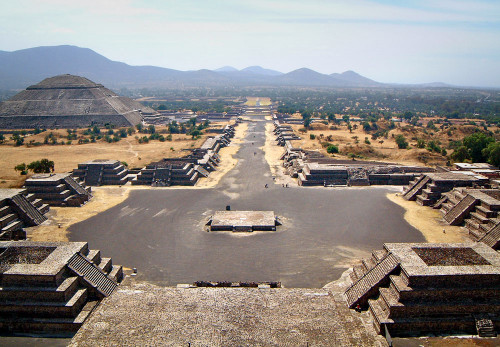
W2-0012: View of the ceremonial core and valley to the southModern historians have been able to expand on Teotihuacan’s formative history through researching other ancient settlements and towns in and around the Basin of Mexico. It is clear that before work began at Teotihuacan, in 100BC, there were several dozen other settlements populating the basin. However, by the time the monumental core of Teotihuacan was completed in 100AD the satellite settlements had almost disappeared. Clearly the city required manpower and therefore provided jobs and food, but why would people leave their farms and villages to toil on building such immense structures – structures that were so large, they would take several generations to complete. The answer is surely that Teotihuacan offered something new, something hitherto unknown, for in a volatile world of marauders, droughts and volcanic eruptions, Teotihuacan would provide security. And it would be the volcanoes of the Sierra Nevada, where the warmer climate and rich soils had supported many early agricultural communities, that would provide Teotihuacan’s biggest influx of skilled labour. Evidence of this is found in the ruins of Cuicuilco, which lies 50 miles south-west of Teotihuacan and had been prospering since 700BC. Cuicuilco was covered by lava 10 metres thick following the eruption of Mount Xitle in the 1st century AD. This obviously devastated the city and affected a far greater area. It has been suggested that the migrating population of Cuicuilco and its satellite settlements may have founded Teotihuacan as they looked for safety. This would explain how Teotihuacan was planned as a great city from the outset, however the timing of the eruption appears to have come after the construction of Teotihuacan and there is even evidence that Cuicuilco was falling into decline because of a power shift towards the new city of Teothihuacan.
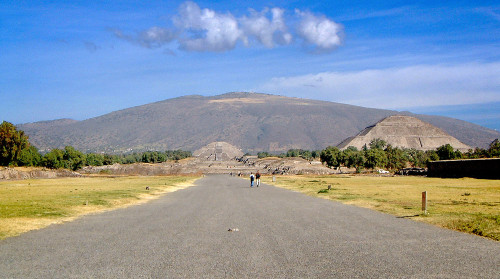
W1-0014: The Beacon of Cerro Gordo rising above the city Regardless of the exact timing, the eruption of Xitle would certainly have displaced huge numbers of people from the city of Cuicuilco and many other towns, settlements and farmlands that were affected by the lava flow and the ashen fallout. Tens of thousands would have been left homeless and left to wander the chilly high-plains looking for food and shelter. The obvious place to go would be north, to rapidly growing city of Teotihuacan. Its massive pyramids and the gargantuan Cerro Gordo, would have been a beacon of safety to all those who ventured north. But, immigration on this scale should have put the city in turmoil, for not even Teotihuacan could have had the resources to feed and house such a large increase in population in such a short time – food simply doesn’t grow quickly enough. Yet, Teotihuacan did support this population increase and appears to have grown stronger with it.
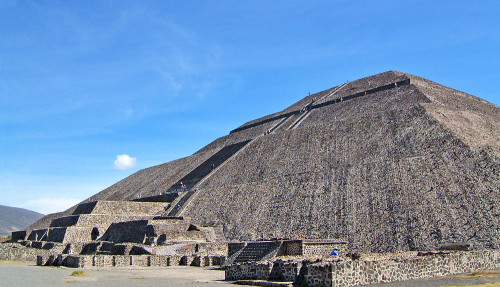
W1-0019-: Pyramid of the Sun The reason for Teotihuacan’s success is built into the very fabric of the city, and the urban planning that can still be seen today is enduring evidence of a well formed civic ideal. The Teotihuacano ideology fused religious formality, social structure and political organisation to control the city’s physical expansion as well as the lives of all who lived within it. These principles were in place when the first stone was set and were locked into the city’s first buildings for all to observe. To ensure the city understood its destiny and its role within the Mesoamerican landscape, they started with the largest monumental structure, the Pyramid of the Sun. This would be the centre-piece of the city, around which all other buildings would be arranged. It would sit at the heart of the city and provide a constant reminder to the people of the city’s power and their achievement. But it would also play a hugely symbolic role, for they built to face the setting sun on the 11th August, as it headed south towards winter. The sun would set in the very same place 260 days later as it travelled back north, on the 29th April. To remove any confusion about the Pyramid of the Sun’s symbolic purpose, they also built 260 steps to its summit and made it 260 standard units wide at the base. This epic structure would therefore not only assert Teotihuacan’s power, but it would also be a monument to the beginning of time, which was the 11th August 3114BC, and the origin of the 260 day Ritual Calendar.
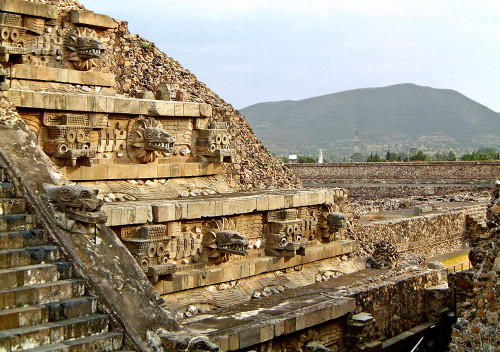 W2-0037: Temple of the Feathered-SerpentThe message that time began at Teotihuacan would be built into all of its structures. The Pyramid of the Moon align with setting of Plaiedes on the very same day as Pyramid of the Sun faced sunset. This would mark the heavenly congregation of Gods, who would meet to create a each new age. And whilst the Pyramid of the Sun marked the sun’s 260 day southern transit, the Pyramid of the Moon would be built precisely north and measure 105 standard units at its base – thus marking the sun’s northern transit and complete the solar year. The Pyramid of the Feathered Serpent would be covered in carved images depicting the creation of the Fifth Sun at Teotihuacan. It would have 260 stone heads of the Feathered Serpent and 13 pyramidal structures that could be used to record the passing of time and it would sit in a plaza so great that the entire population could congregate to observe the rituals of the 260 day calendar. The three great Pyramids would be aligned to match the three stars of Orion’s Belt and reflect the planting of the hearth-stones at the beginning of time, in 3114BC. The huge Avenue of the Dead would cut through the centre of this heavenly model and be lined with pyramidal stars to reflect the heavens and the Milky Way. Beneath the Pyramid of the Feathered Serpent they would create womb like caves and decorate the access tunnel with glowing orbs and starry walls to represent a birthplace of the heavenly gods. Beneath the Pyramid of the Sun there would be four caves that would represent the birthplace of the earth gods. As the Aztecs would later acknowledge, they would build a “Place Where Time Began”.
W2-0037: Temple of the Feathered-SerpentThe message that time began at Teotihuacan would be built into all of its structures. The Pyramid of the Moon align with setting of Plaiedes on the very same day as Pyramid of the Sun faced sunset. This would mark the heavenly congregation of Gods, who would meet to create a each new age. And whilst the Pyramid of the Sun marked the sun’s 260 day southern transit, the Pyramid of the Moon would be built precisely north and measure 105 standard units at its base – thus marking the sun’s northern transit and complete the solar year. The Pyramid of the Feathered Serpent would be covered in carved images depicting the creation of the Fifth Sun at Teotihuacan. It would have 260 stone heads of the Feathered Serpent and 13 pyramidal structures that could be used to record the passing of time and it would sit in a plaza so great that the entire population could congregate to observe the rituals of the 260 day calendar. The three great Pyramids would be aligned to match the three stars of Orion’s Belt and reflect the planting of the hearth-stones at the beginning of time, in 3114BC. The huge Avenue of the Dead would cut through the centre of this heavenly model and be lined with pyramidal stars to reflect the heavens and the Milky Way. Beneath the Pyramid of the Feathered Serpent they would create womb like caves and decorate the access tunnel with glowing orbs and starry walls to represent a birthplace of the heavenly gods. Beneath the Pyramid of the Sun there would be four caves that would represent the birthplace of the earth gods. As the Aztecs would later acknowledge, they would build a “Place Where Time Began”.
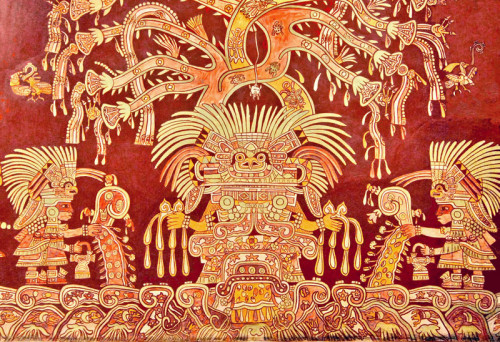 W2-0027: Mural of Tepantitla Constructing this huge ceremonial centre would keep the ever-growing population busy for over 200 years. After this, the population were set to work building permanent stone residences, both for the elite and themselves. The orderliness of the city’s construction was relentless, and the strict principles and alignments were built into every home – even those that fell outside of the city’s 20km2 boundary. In total, more than 2,200 residential compounds were constructed, each featuring homes organised around a central patio with a communal kitchen and its own temple. Between these compounds they built streets and pavements, sewers and waterways that supplied running water. The apartments were then decorated with murals that relayed the religious beliefs and doctrines of the city. The murals found in the few excavated complexes, such as Tetitla and Tepantitla, also reveal they formed neighbourhoods, or districts, that had their own priesthood, schools and municipal buildings, with their own identity and distinctive attire. Through such projects, Teotihuacan ensured that every member of their 100,000 strong population were kept busy and actively involved in defining the both the city and themselves.
W2-0027: Mural of Tepantitla Constructing this huge ceremonial centre would keep the ever-growing population busy for over 200 years. After this, the population were set to work building permanent stone residences, both for the elite and themselves. The orderliness of the city’s construction was relentless, and the strict principles and alignments were built into every home – even those that fell outside of the city’s 20km2 boundary. In total, more than 2,200 residential compounds were constructed, each featuring homes organised around a central patio with a communal kitchen and its own temple. Between these compounds they built streets and pavements, sewers and waterways that supplied running water. The apartments were then decorated with murals that relayed the religious beliefs and doctrines of the city. The murals found in the few excavated complexes, such as Tetitla and Tepantitla, also reveal they formed neighbourhoods, or districts, that had their own priesthood, schools and municipal buildings, with their own identity and distinctive attire. Through such projects, Teotihuacan ensured that every member of their 100,000 strong population were kept busy and actively involved in defining the both the city and themselves.
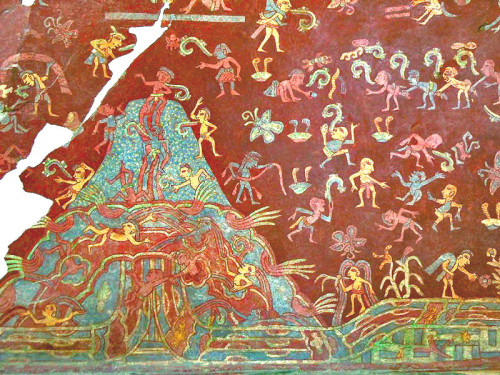 W2-0025: Religious activities played out at TeotihuacanThis work, combined with the fervent religious activities organised around the Ritual Calendar and grand re-enactments of religious events upon its pyramids, is how Teotihuacan maintained order over its immense population. However, the semi-arid plains and colder climate of the Altiplano were unable to support such a large population and Teotihuacan would need to expand its territories to the warmer climates of the south. But first, they would need an army to conquer and control distant lands, and a commodity to trade and persuade distant rulers. They found the origins of both 50km north, on the other side of Cerro Gordo and directly in line with the Avenue of the Dead. There, in Pachuca, were the ancient obsidian mines that had been in use since 12,000BC. By 200AD it had become an industrialised mining operation controlled by Teotihuacan, with workshops and buildings arranged and aligned with the Teotihuacano principles. The people of Mesoamerica would become dependent this black volcanic glass, for it could be knapped into a very sharp blade, polished into mirror, or fashioned into jewellery and ornaments. Not only did this obsidian mine provide infinite spear-tips for Teotihuacan’s military campaigns, but it also provided a type of obsidian that appeared to have been given to them by the gods – for it was green. Along with standard obsidian, which needed a constant supply for it quickly blunted, this precious green commodity would be exported throughout Mesoamerica and provide the Teotihuacano with immense riches.
W2-0025: Religious activities played out at TeotihuacanThis work, combined with the fervent religious activities organised around the Ritual Calendar and grand re-enactments of religious events upon its pyramids, is how Teotihuacan maintained order over its immense population. However, the semi-arid plains and colder climate of the Altiplano were unable to support such a large population and Teotihuacan would need to expand its territories to the warmer climates of the south. But first, they would need an army to conquer and control distant lands, and a commodity to trade and persuade distant rulers. They found the origins of both 50km north, on the other side of Cerro Gordo and directly in line with the Avenue of the Dead. There, in Pachuca, were the ancient obsidian mines that had been in use since 12,000BC. By 200AD it had become an industrialised mining operation controlled by Teotihuacan, with workshops and buildings arranged and aligned with the Teotihuacano principles. The people of Mesoamerica would become dependent this black volcanic glass, for it could be knapped into a very sharp blade, polished into mirror, or fashioned into jewellery and ornaments. Not only did this obsidian mine provide infinite spear-tips for Teotihuacan’s military campaigns, but it also provided a type of obsidian that appeared to have been given to them by the gods – for it was green. Along with standard obsidian, which needed a constant supply for it quickly blunted, this precious green commodity would be exported throughout Mesoamerica and provide the Teotihuacano with immense riches.
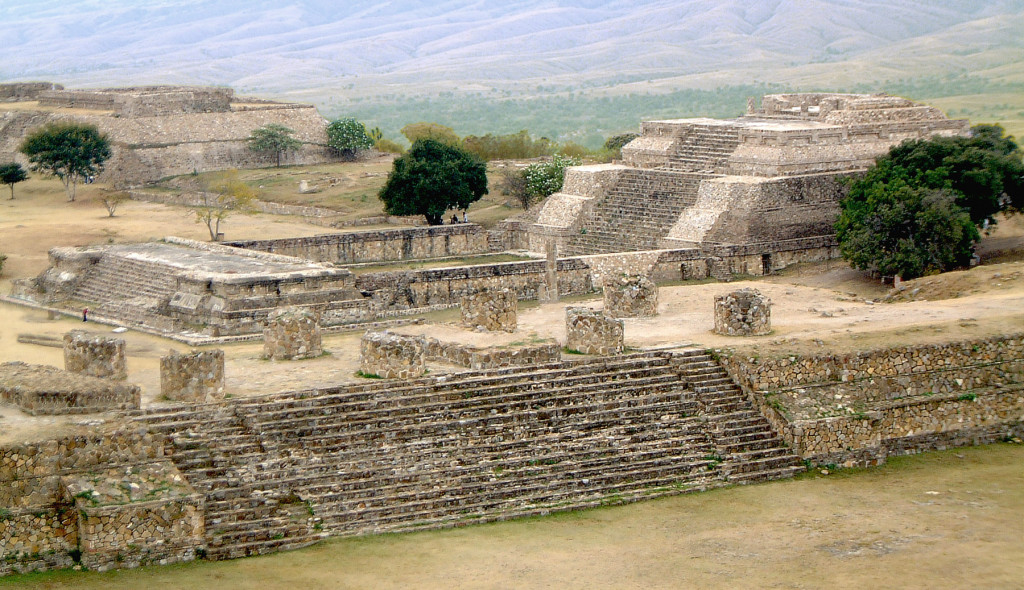
0247: Monte Alban – System IV Complex The Teotihuacano expansion started in Morelos, where evidence of Teotihuacano occupation can be found amongst the ruins of Las Pilas. Here, 100 miles south of Teotihuacan, the warmer climates were ideal for cotton production and farming on a far greater scale than Teotihuacan’s own environment could sustain. From here, Teotihuacan expanded its control a further 300 miles south, piercing the heart of the Oaxaca Valley and taking control of the Zapotec capital, Monte Alban, in around 250AD. With sustenance already provided for by the acquisition of Morelos, it appears that this campaign was in pursuit of precious commodities and control over the trade routes flowing across Mesoamerica. At Monte Alban, they took control of mica, a fine glassy mineral rock that could be peeled into fine translucent sheets. Exactly why this was important to them is unknown, but the Teotihuacano buried sheets of it within the Pyramid of the Sun and beneath a floor a the “Mica Temple” to the west of the great pyramid. Zapotec workshops have also been found at Teotihuacan within a district called Tlailotlacan, which is also known as the Oaxaca Barrio. Evidence of a Teotihuacano influence at Monte Alban is thought to be found in the construction of the System IV complex, which incorporates facets of the Talud-Tablero design and is offset from the strict north-south alignment of hilltop site, as though it was aligned with the sunset on the 11th August, as Teotihuacan itself was.
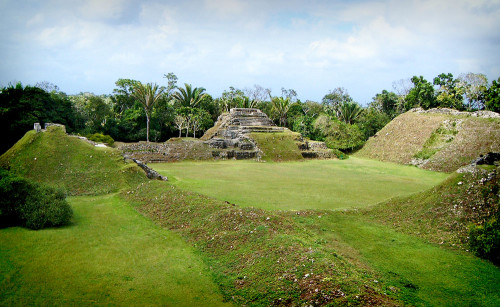
W0767: Altun Ha – Plaza A Around the same time, 250AD, Teotihuacano influence can also be found as faraway as Altun Ha in Belize, where a burial named F8/1 included 243 pieces of green obsidian from Teotihuacan’s mines in Pachuca. This shortly pre-dates a period a large scale expansion, that would suggest a link between Teotihuacano trade and the cities growth. The Teotihuacano were undoubtedly in pursuit of jade, and Altun Ha is littered with chippings that suggests it was a large-scale centre for jade carving. However, the jade, as they would discover, only came from one place, the mines of the Motugua Valley in south-eastern Guatemala. To gain control of this trade, Teotihuacan focussed on an allied city, Tikal. In 378AD, Stela 31 at Tikal and Stela 5 at Uaxactun, state that an emissary, or Lord of the West, named Siyah K’ak’ arrived in the Peten area from Teotihuacan. Tikal’s ruler, Jaguar Paw, coincidently dies during his visit and Siyah K’ak’ instated Nun Yax Ayin as the new ruler. Nun Yax Ayin is described on Stela 31 as the son of Spearthrower Owl, who is believed to have been the Ruler or a Great Lord at Teotihuacan (the owl iconography can be seen in many murals at Teotihuacan and features prominently on the carved pillars of the Palace of Quetzalpapalotl). 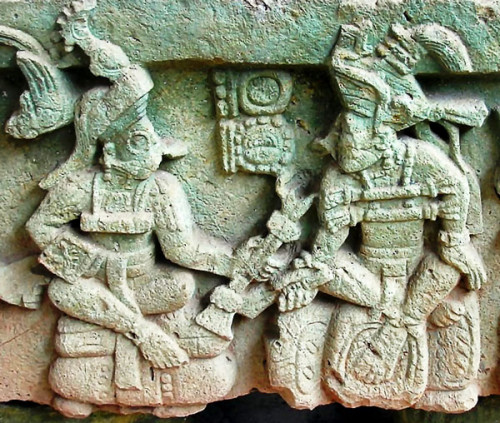
W1064QSF: Copan – Altar Q Altar Q at Copan then states that a Lord named K’inich Yax K’uk’ Mo’ arrived in 426AD to found the new Mayan city and depicts him in full Teotihuacano regalia, stating that he had travelled for 153 days to arrive there. The Hieroglyphic Stairway at Copan states that K’inich Yax K’uk’ Mo’ installed a vassal, who had travelled with him, named Tok Casper at nearby Quirigua a few days later. Both of these settlements lie on the river network that leads out to the Caribbean from the Motagua River and their primary role was to control the jade trade. Sitting between the mines and the Pacific coast was the huge Mayan city of Kaminaljuyu, where there is also clear evidence of Teotihuacano influence during the 5th century.
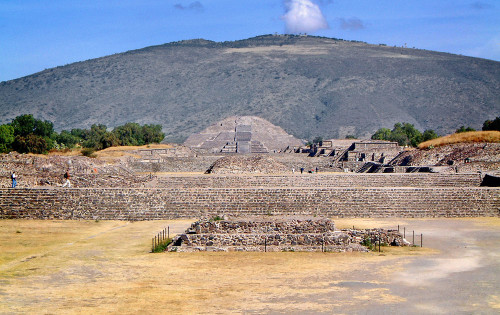
W1-0015: The long row of ceremonial buildings at the site coreBy the 6th century, Teotihuacan appears to have held sway over much of Mesoamerica through its political alliances and vassal rulers. Its control over the trade networks was keeping the Teotihucano people well fed and living in comparative luxury, in their state-of-the-art city, with running water, sewers, brick homes and neighbourhood communities. But they were dependent on these alliances and trade and if those were to fail then so would the city. For reasons unknown, the city did fail at some point during the 6th or 7th century. The public revolted and burned down the temples and municipal buildings at the heart of the city and the elite were forced out. From that day onwards, Teotihuacan’s power was gravely diminished and the city shrunk to a population of 20,000 people who lived in relative isolation. Meanwhile, it appears the elite who fled the city went on to create new cultural centres to the south that would one day dominate the landscape yet again. One of those cultures would return 700 years later, and name it Teotihuacan – the Place Where Time Began.

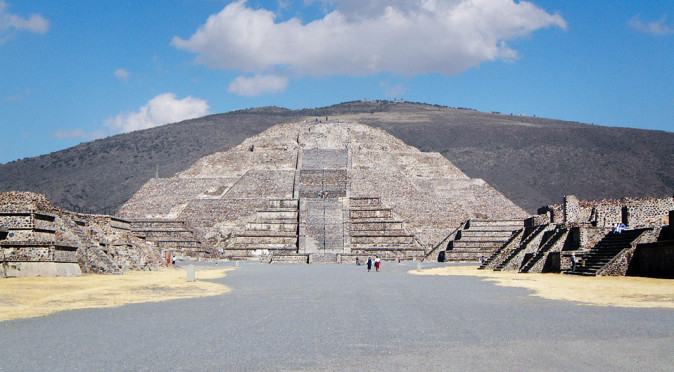
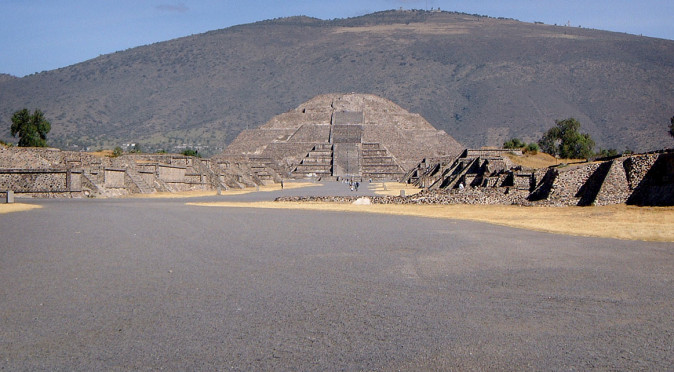
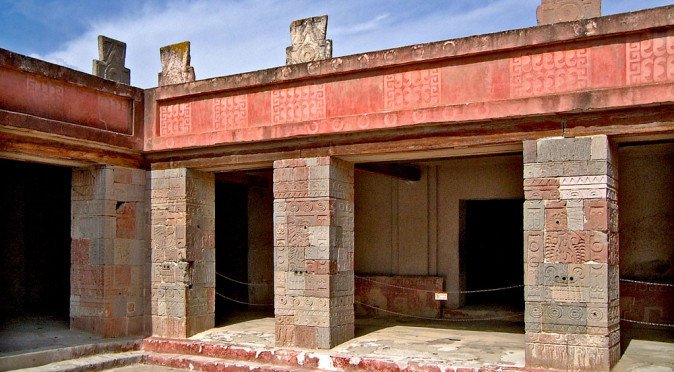
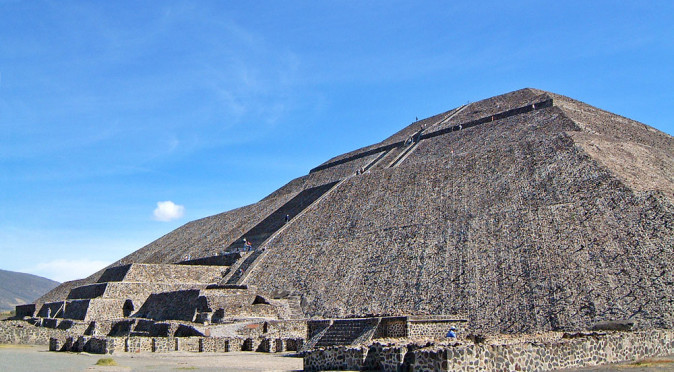
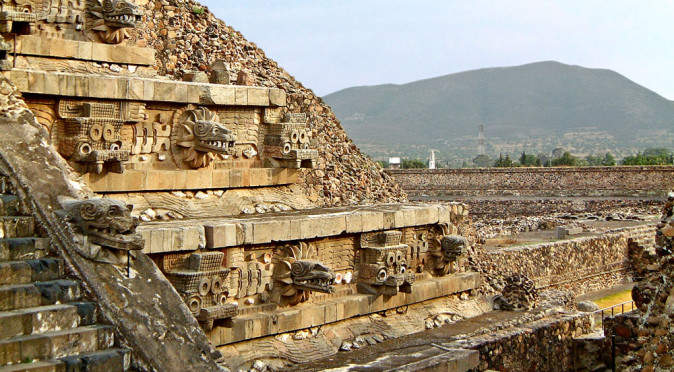
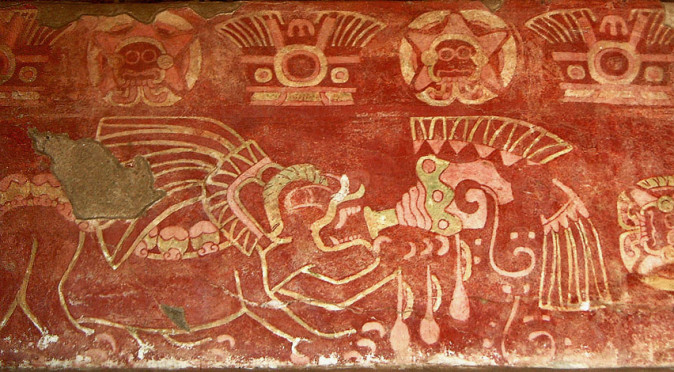
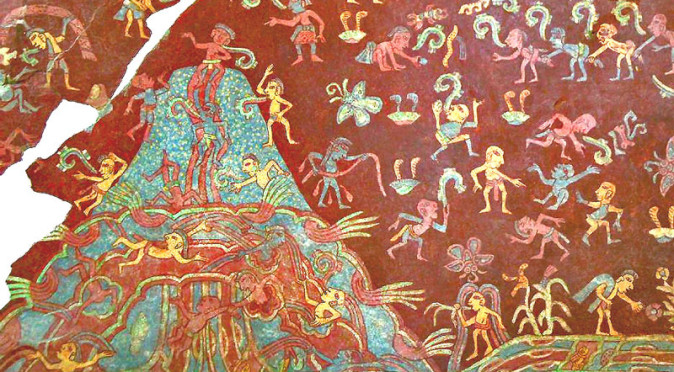
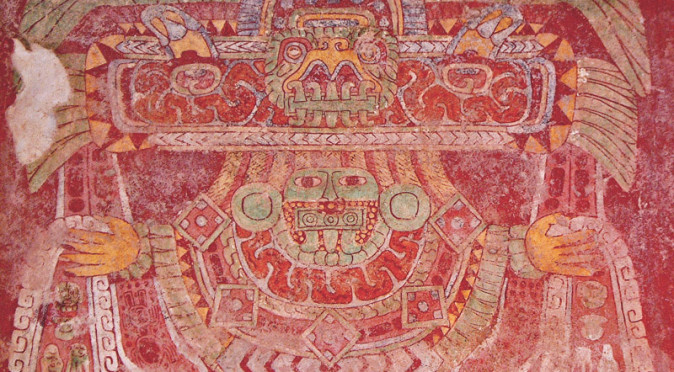
Great post; the whole site provides a wealth of information for travellers and historians alike. Engaging and accessible writing, brought to life by some great original images.
Great article, but puzzled by your assertion that the Teotihuacanos took control of the Zapotec capital, Monte Alban, around 250AD. I can’t find that in other sources.
Could you point me in the right direction? From what source did you find this info? I’m working on a project on Teotihuacan now.
Many thanks!
Hi Karen, unfortunately, I was pretty bad at providing my sources early on – largely a result of wanting to write, and not get bogged down with creating footnotes and links! I later regretted that. My more recent articles do have citations and reference lists.
In this case, I believe it was Marcus Winter’s discoveries in the North Platform during The Proyecto Especial de Monte Albán (PEMA) combined with reciprocal findings at Teotihuacan, and compelling evidence of a Teotihuacáno trade route spreading southeast as far as Copan.
Control is not always taken by force. And the more research I completed, the more I understood of the Teotihaucano influence in key cities along a trade route that spanned Mesoamerica. Perhaps through marriage, or raising foreign princes in their vast capital, or simply the ability to buy political favour, somehow the Teotihuacano became revered by several powerful cities in Mesoamerica, including Monte Alban.